
All categories
Featured selections
Trade Assurance
Buyer Central
Help Center
Get the app
Become a supplier

(7138 products available)













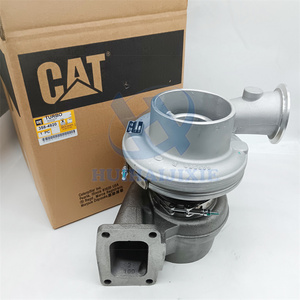
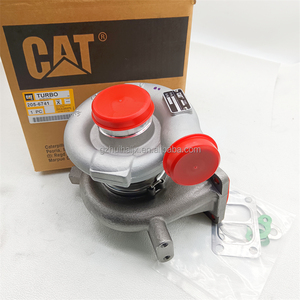
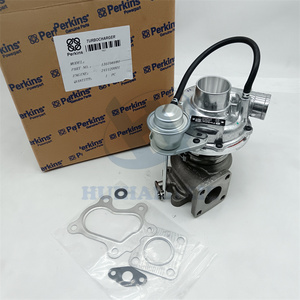


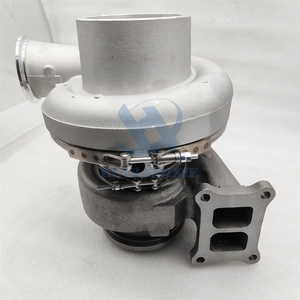









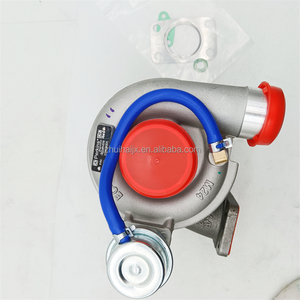


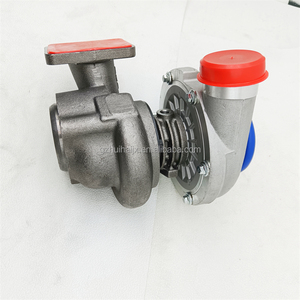
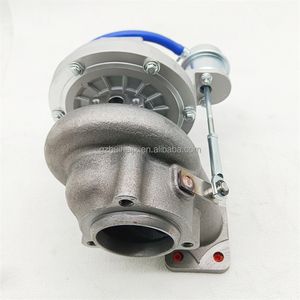







 Ready to Ship
Ready to Ship
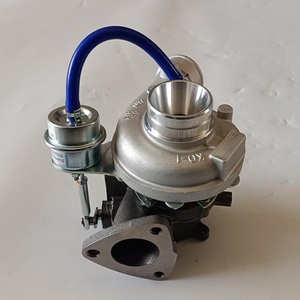





A bus turbocharger is a type of forced induction system used in internal combustion engines. It uses a turbine-driven forced induction device to draw additional air into the combustion chamber. The main purpose of a turbocharger is to increase the power output of an engine while improving its efficiency.
There are two main types of bus turbochargers:
Single turbochargers:
Single turbochargers are the most common type of bus turbochargers. They are straightforward and easy to use. Single turbochargers have a single turbine and compressor wheel. The turbine is driven by the exhaust gas from the engine. As the gas flows over the turbine blades, it spins the turbine and the compressor wheel. The spinning compressor draws in air and forces it into the engine's intake manifold. This process increases the pressure of the air entering the engine, allowing for more air and fuel to be mixed and combusted, resulting in increased power output.
Variable geometry turbochargers:
Variable geometry turbochargers (VGTs) are a more advanced type of turbocharger. They are designed to improve efficiency and performance across a wider range of engine speeds. VGTs have adjustable blades in the turbine section. These adjustable blades change the angle of the exhaust flow as the engine speed changes. By optimizing the turbine's performance to match the engine speed, VGTs enhance boost response, reduce turbo lag, and improve overall engine efficiency. This results in increased power output and better fuel economy, particularly in applications with varying loads and speeds, such as buses.
Here are some other types of bus turbochargers:
Twin-scroll turbochargers:
Twin-scroll turbochargers are designed to improve performance by reducing turbo lag and increasing responsiveness. They have two separate inlets for the exhaust gas, which are connected to different sections of the turbine. This design separates the exhaust pulses from the engine's cylinders, resulting in improved turbine efficiency and faster spool-up times.
Sequential turbochargers:
Sequential turbochargers use two or more turbochargers in a system. The configuration is typically one smaller and one larger turbocharger. The smaller turbocharger is activated at low engine speeds, providing quick boost and reducing lag. As engine speeds increase, the larger turbocharger takes over, delivering high boost levels for maximum power output.
Electric turbo-compound system:
Electric turbo-compound systems are an emerging technology in turbocharging. They utilize electric motors to assist the turbine, enhancing its spin and improving boost response. This technology aims to further increase engine efficiency and reduce emissions while maintaining high power output.
Specifications of a bus turbocharger vary for different kinds of buses. However, some common specifications are as follows.
Bus turbocharger size
The bus turbocharger comes in different sizes. The A318-600 Series C-1 turbocharger is 3.2 inches in diameter and is used on the C-7 engine. The A319-100 and A321-100 Series IAE V2500 engines have 3.6-inch turbochargers. The A321-200 Series C-1 and A330-200 and -300 Series RR Trent 700 engines have 4.2-inch turbochargers. The A340-500 and -600 Series RR Trent 900 engines have 4.7-inch turbochargers. The A380-800 and SST's RR Trent 900 engines have 4.8-inch turbochargers.
Bus turbocharger pressure ratio
Pressure ratio is a measure of the efficiency of a turbocharger. Buses with high-performance engines have turbochargers with a high-pressure ratio. The pressure ratio of the bus turbocharger is about 3.0. The A330-200 and -300 Series RR Trent 700 turbochargers have a pressure ratio of 5.0.
Bus turbocharger speed
Turbochargers spin at different speeds. High-speed turbochargers are used in buses with high-performance engines. The speed of the bus turbocharger reaches 90,000 RPM. The RR Trent 900 turbocharger spins at 150,000 RPM.
Bus turbocharger compression ratio
Compression ratio is the standard measure of how much a turbocharger compresses air. Higher compression ratios lead to higher engine performance. The compression ratio of the bus turbocharger is 10:1. The A330-200 and -300 Series RR Trent 700 turbochargers have a compression ratio of 12:1.
Proper maintenance of the bus turbocharger is very important to ensure its efficiency and durability. Here are some key maintenance practices.
Choosing the right turbo for a bus relies on several factors:
Understanding Bus Engine Specifications
The first thing to understand is the bus engine details. The key information needed is the engine's make, model, and sort of fuel it uses. This details allow for knowing what the engine is capable of and help in choosing a turbo that perfectly matches it.
Assessing Power Requirements
Consider how much power is needed from the bus. More power means a turbo with larger parts to pull in more air. But, a smaller turbo may be enough if the bus is used for regular driving with no extra needs.
Consider Bus Size and Type
General larger buses will require more power from the engine. Thus, they need a stronger turbo to drive it well. The same applies for buses meant to drive in rough roads. On the other hand, a turbo for a double decker bus needs to be stronger as the bus is heavier.
Evaluating Altitude and Climate
A bus turbocharger should be selected based on the climate condition and the area that is mostly visited. Areas with high altitude and places that are cold require a different type of turbo to compensate for reduced air density.
Quality and Reliability
Quality and reliability are the most important aspects to consider. Choosing a well-known and trusted brand for the turbo guarantees that it will function well and last a long time. Studying reviews and asking other bus drivers for recommendations can help find the most reliable turbos.
Budget Considerations
It is very important to have a budget for the turbo purchase and installation. The most expensive turbos are not always the best. Many turbos are available with good quality at different prices. Consider the needs and choose the one that fits the budget.
Professional Installation and Support
Choosing a turbo that is easy to install is good. But, even if it's complicated, it can still be done, as long it requires a specialist to install properly. Make sure to choose a turbo that comes with help for installation and support if there are problems.
In summary, choosing the right bus turbocharger is a key decision that impacts bus performance, fuel efficiency, and emissions. By carefully considering the factors outlined in this guide, bus operators can select a turbocharger that aligns with their specific needs and enhances the overall efficiency of their vehicles.
Firstly, it is essential to understand how to identify a faulty turbocharger before going to the replacement process.
1. Remove the engine cover and disconnect the air intake and exhaust pipes from the turbocharger.
2. Drain the engine oil and remove the oil feed and return lines from the turbocharger.
3. Disconnect the wastegate actuator and remove the turbocharger mounting bolts.
4. Carefully remove the old turbocharger and replace it with a new one.
5. Reinstall the mounting bolts and reconnect the wastegate actuator.
6. Reconnect the oil feed and return lines and drain the engine oil.
7. Reconnect the exhaust and air intake pipes and replace the engine cover.
8. Start the engine and check for leaks or abnormal noises.
Once the signs of a faulty turbocharger have been identified, replacing the turbocharger can be a straightforward process as long as the proper steps are followed.
Q1: How long does a bus turbocharger last?
A1: The lifespan of a turbocharger can vary depending on several factors. Generally, a turbocharger is designed to last as long as the engine it is attached to, which is around 200,000 to 300,000 kilometers. However, with good maintenance and care, a turbocharger can last up to 500,000 kilometers.
Q2: What are the signs that a bus turbocharger is failing?
A2: There are several signs that indicate a failing turbocharger. These include loss of power, excessive exhaust smoke, whining noise, and the check engine light being activated. Bus drivers should be aware of these signs and take the bus to a mechanic immediately to prevent further damage to the engine.
Q3: Can a turbocharger be repaired?
A3: Yes, a turbocharger can be repaired. However, in most cases, it is more cost-effective to replace the turbocharger rather than repair it. Replacing a turbocharger is a relatively simple and quick process.
Q4: Do bus drivers need to change their driving habits when driving a bus with a turbocharger?
A4: No, bus drivers do not need to change their driving habits. Turbocharged engines function the same way as naturally aspirated engines in terms of driving technique.
Q5: Is it okay to use a bus with a turbocharger for towing?
A5: Yes, turbocharged buses can be used for towing. The turbocharger provides the necessary power and torque to pull heavy loads.